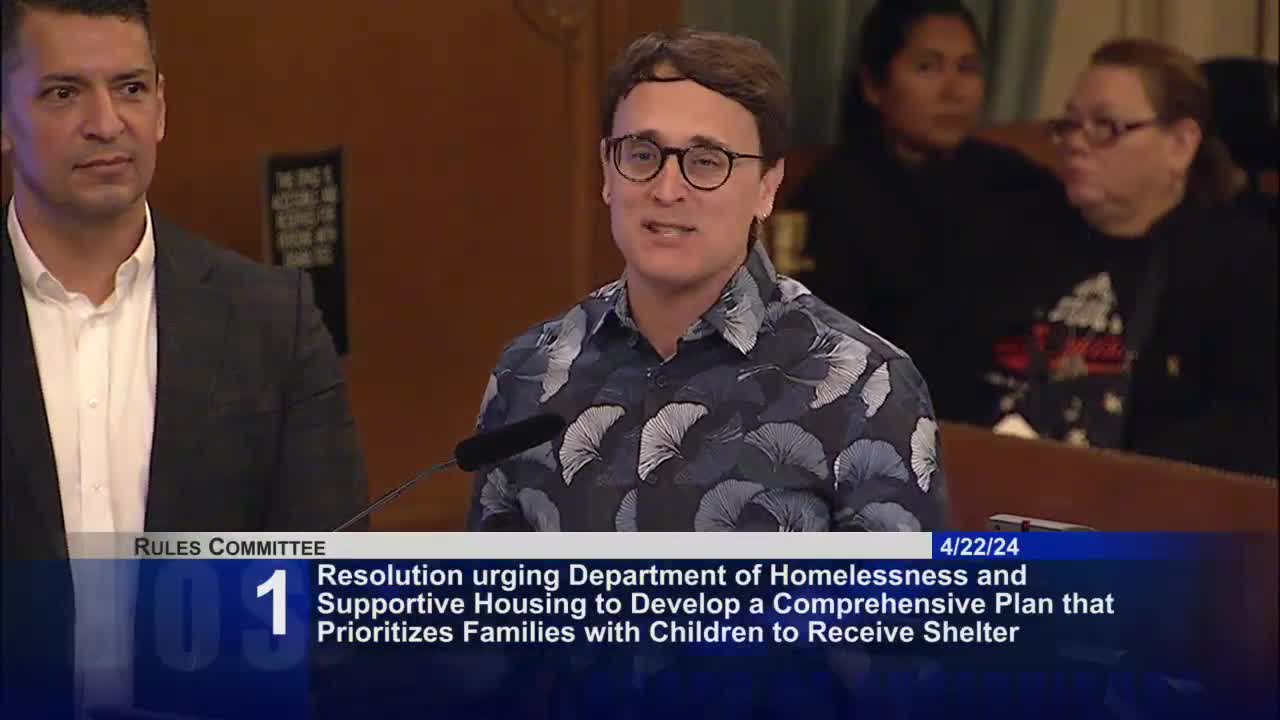OSEA discusses homelessness support strategies with San Francisco supervisors
April 22, 2024 | San Francisco County, California

This article was created by AI summarizing key points discussed. AI makes mistakes, so for full details and context, please refer to the video of the full meeting. Please report any errors so we can fix them. Report an error »

The San Francisco County government meeting held on July 4, 2025, focused on addressing the complexities of grant management and service delivery within the city’s homeless support systems. The meeting began with discussions led by representatives from the Office of Supportive Housing and the Department of Homelessness and Supportive Housing (HSH).
A key point raised was the challenge of navigating the various granting requirements across multiple departments. The Office of Supportive Housing emphasized its role as a provider of technical assistance rather than a grant-holding entity, which limits its ability to declare emergencies or enforce grant compliance. The department acknowledged the need for more creative solutions to better understand and meet the needs of the community, particularly in light of the sanctuary ordinance.
The conversation highlighted the importance of centralizing information sharing among community-based organizations and city agencies. It was noted that the current decentralized approach can create barriers for individuals seeking assistance, as they often must visit multiple nonprofits to access services. The representatives suggested exploring a "no wrong door" approach, which would allow individuals to connect with resources regardless of where they first seek help, such as schools or community centers.
The meeting also included a call for further discussions on establishing a physical hub for services, which could streamline access for those in need. The representatives expressed a willingness to continue conversations with HSH and other stakeholders to improve the existing network of support.
As the meeting progressed, the committee members sought to clarify the roles of various departments, including the absence of a representative from the Department of Mental Health, which was noted as a gap in the discussion.
In conclusion, the meeting underscored the ongoing challenges in San Francisco's approach to homelessness and the need for collaborative efforts to enhance service delivery and accessibility for the community. Further discussions and follow-up actions are anticipated as the city seeks to address these critical issues.
A key point raised was the challenge of navigating the various granting requirements across multiple departments. The Office of Supportive Housing emphasized its role as a provider of technical assistance rather than a grant-holding entity, which limits its ability to declare emergencies or enforce grant compliance. The department acknowledged the need for more creative solutions to better understand and meet the needs of the community, particularly in light of the sanctuary ordinance.
The conversation highlighted the importance of centralizing information sharing among community-based organizations and city agencies. It was noted that the current decentralized approach can create barriers for individuals seeking assistance, as they often must visit multiple nonprofits to access services. The representatives suggested exploring a "no wrong door" approach, which would allow individuals to connect with resources regardless of where they first seek help, such as schools or community centers.
The meeting also included a call for further discussions on establishing a physical hub for services, which could streamline access for those in need. The representatives expressed a willingness to continue conversations with HSH and other stakeholders to improve the existing network of support.
As the meeting progressed, the committee members sought to clarify the roles of various departments, including the absence of a representative from the Department of Mental Health, which was noted as a gap in the discussion.
In conclusion, the meeting underscored the ongoing challenges in San Francisco's approach to homelessness and the need for collaborative efforts to enhance service delivery and accessibility for the community. Further discussions and follow-up actions are anticipated as the city seeks to address these critical issues.
View full meeting
This article is based on a recent meeting—watch the full video and explore the complete transcript for deeper insights into the discussion.
View full meeting
